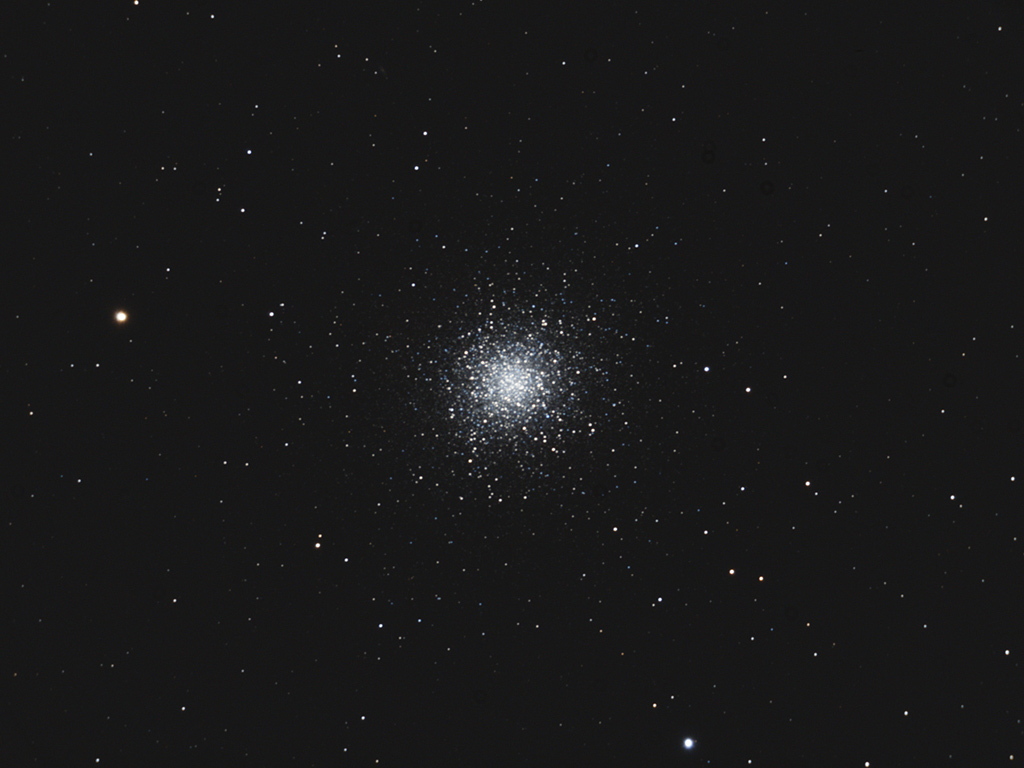
Telescope: Meade 12” LX850 ACF @ f/8, Orion Atlas EQ-G
Camera: Baader modified Nikon 610
Filter: High Point 2” IR Blocking Filter
Guide scope: Astro-Tech 60mm, ASI290MM Mini, PHD2
Exposure: 20x60sec, ISO 200, saved as FITS
Darks: 32x60s, saved as FITS
Flats: 32×1/2sec, Tee shirt flats taken at dusk
Average Light Pollution: Red zone, Bortle 8, poor transparency, haze
Lensed Sky Quality Meter: 17.8 mag/arc-sec^2
Stacking: Mean with a 2-sigma clip.
White Balance: Nebulosity Automatic
Software: Backyard Nikon, Deep Sky Stacker, Photoshop
This is M13, the Great Cluster in Hercules. M13 appears large in part because it is relatively close at a distance of about 25,000 light years. Also, it is in fact quite large with a diameter of 145 light years. Globular clusters like M13 are relics of the early universe and M13 is believed to be about 12 billion years old, about as old as the Milky Way. If you look carefully at M13 you can see a dust lane to the lower left of the cluster. This is a very unusual feature for globular clusters and it is not clear if this is actually associated with M13 or simply lies in the line of sight with the cluster. I have tried several time to glimpse this feature visually, but so far it has evaded me. Something to keep working on!
M13 currently rises in the northeast late in the evening and is high overhead at dawn.
Recent Comments